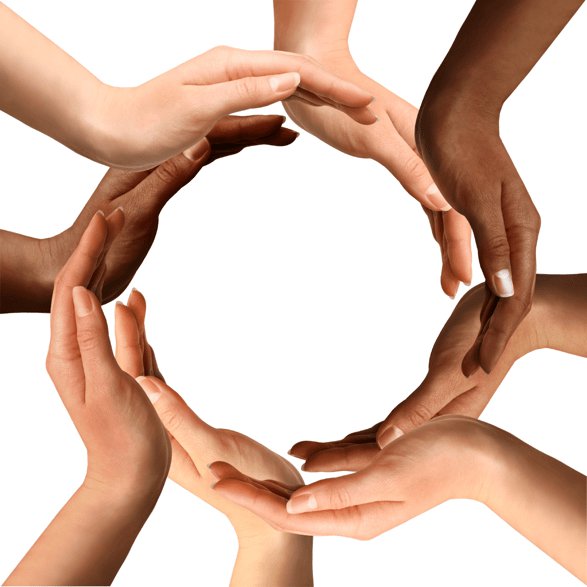 As healthcare professionals serving a diverse community, we stand in solidarity with the black community and are intolerant of the racism woven into the fabric of our daily lives. We strongly believe in and advocate for the equal rights of all children. Racism and racial disparities are a public health crisis, harming everyone in our community.
As healthcare professionals serving a diverse community, we stand in solidarity with the black community and are intolerant of the racism woven into the fabric of our daily lives. We strongly believe in and advocate for the equal rights of all children. Racism and racial disparities are a public health crisis, harming everyone in our community.
Children begin to notice differences in preschool, and have formed biases before entering middle school. Regardless of their race, children need to know that racism exists in order to be prepared to stand up to injustice. Adults are the greatest models for children, and it is our responsibility to raise them to effect change. Having age-appropriate, open discussions will lay the groundwork for life lessons and change.
As pediatric providers, we encourage you to have these tough conversations with your children repeatedly as they grow and develop. It’s never too late to teach your children about racial injustice and inequity; to nurture and embrace inclusivity; and to model advocacy. We developed the following suggestions to start:
- Be aware of your own emotions. The stress of watching and hearing about all these traumatic events can be difficult to manage. Use your own coping strategies to help channel your anxiety and anger to think and act more clearly.
- Examine your own biases. Do you pull your child close when passing a person of color and transfer implicit bias? Does talking about race make you uncomfortable and infer negative connotations?
- Be honest and use specific language. Blacks in America have a long history of being treated unfairly. Explain why the protests are occurring and make a distinction between the violence and the reason to protest.
- Embrace curiosity. Listen to what your child says, ask them questions and demonstrate that you are interested in these conversations. Respond to them at their developmental level. Don’t flood them with too much information they cannot process, but be honest and accurate.
- Foster pride. Talk about heritage, discuss stories of people of different races, pointing out their contributions and strengths.
- Model inclusion. Do you have a diverse set of friends, neighbors, read books with characters representing diversity, or that discuss topics from diverse perspectives and roles?
- Broaden choices. Think carefully about choices you make for your child to expose them to differences. Find activities, movies, and books that expose them to issues or racial diversity.
- Provide hope. Generate ideas of things to do to make a difference. Learn about and get involved with organizations that support causes of racial equity and find ways to get involved: Black Lives Matter, Anti-Defamation League, NAACP, Child Mind Institute, www.embracerace.org,etc.
- Engage in the political process. Understand who your politicians are, what they stand for, and discuss the importance of voting.
- Prepare them for future encounters. Give your child information that will arm them to defend and counteract racism in a safe and constructive manner so that they are not being complicit bystanders.
Additional Resources for Children:
- https://booksforlittles.com/racial-diversity/?fbclid=IwAR2DXObFJGwQEafqaAHfhXosWXD2hHyShp8gkBTQPejIYTPOFha5n3kwntY
- https://www.embracerace.org/resources/26-childrens-books-to-support-conversations-on-race-racism-resistance?fbclid=IwAR0BQxWc4Riaq2KqkQCwnDftt_Gc6vxjaXrnH63vIoUjituO_g3sCRGAa5g
- https://www.commonsensemedia.org/lists/books-about-racism-and-social-justice
- https://www.readbrightly.com/how-to-talk-to-kids-about-race-books-and-resources-that-can-help/
- https://www.healthychildren.org/English/healthy-living/emotional-wellness/Building-Resilience/Pages/Books-to-Build-Character-Teach-Important-Values.aspx
Resources for Parents:
- www.tolerance.org
- https://www.embracerace.org
- https://raisingequity.org
- https://www.ahaparenting.com/ask-the-doctor-1/talking-with-children-about-racism-police-brutality-and-protests
- https://everydayfeminism.com/2014/08/raising-racially-conscious-kids/
- The Color of Law: A Forgotten History of How Our Government Segregated America - Richard Rothstein
- They Called Us Enemy - George Takei, Justin Eisinger, and Steven Scott
- Between the World and Me -Ta-Nehisi Coates
- Born a Crime -Trevor Noah


